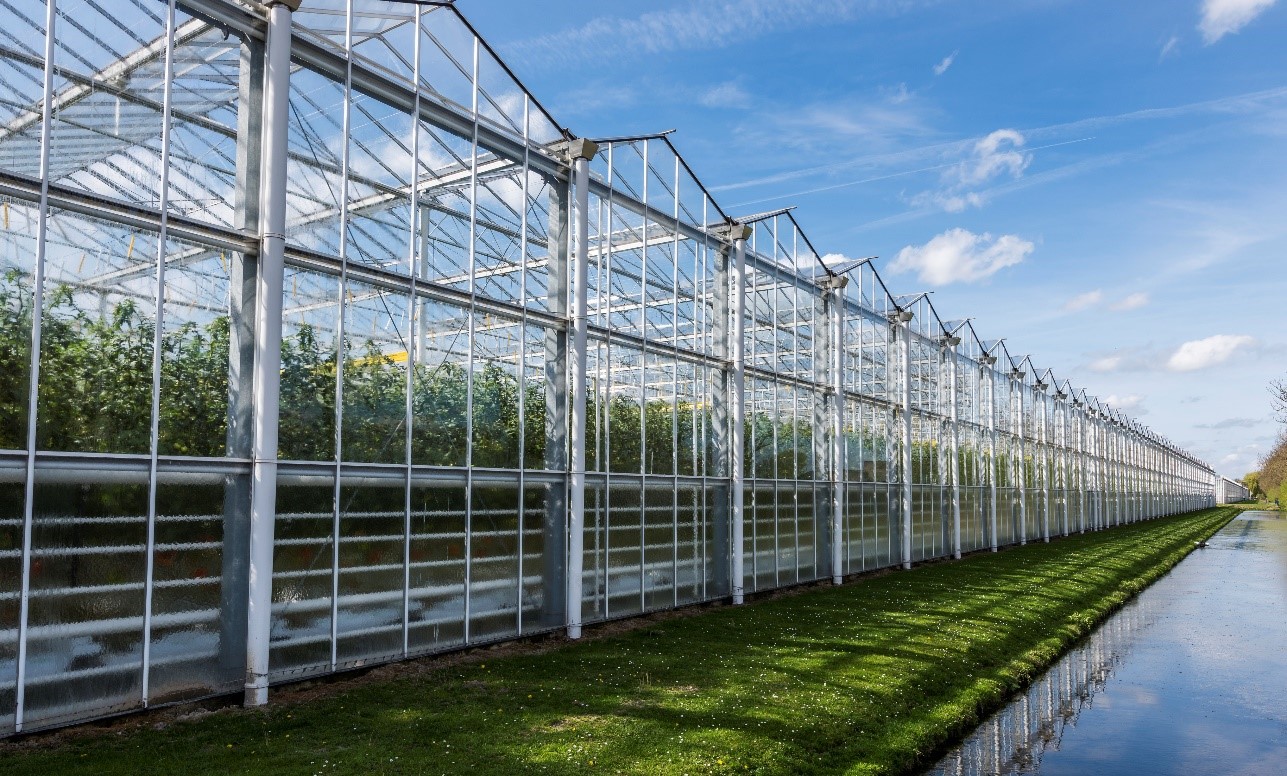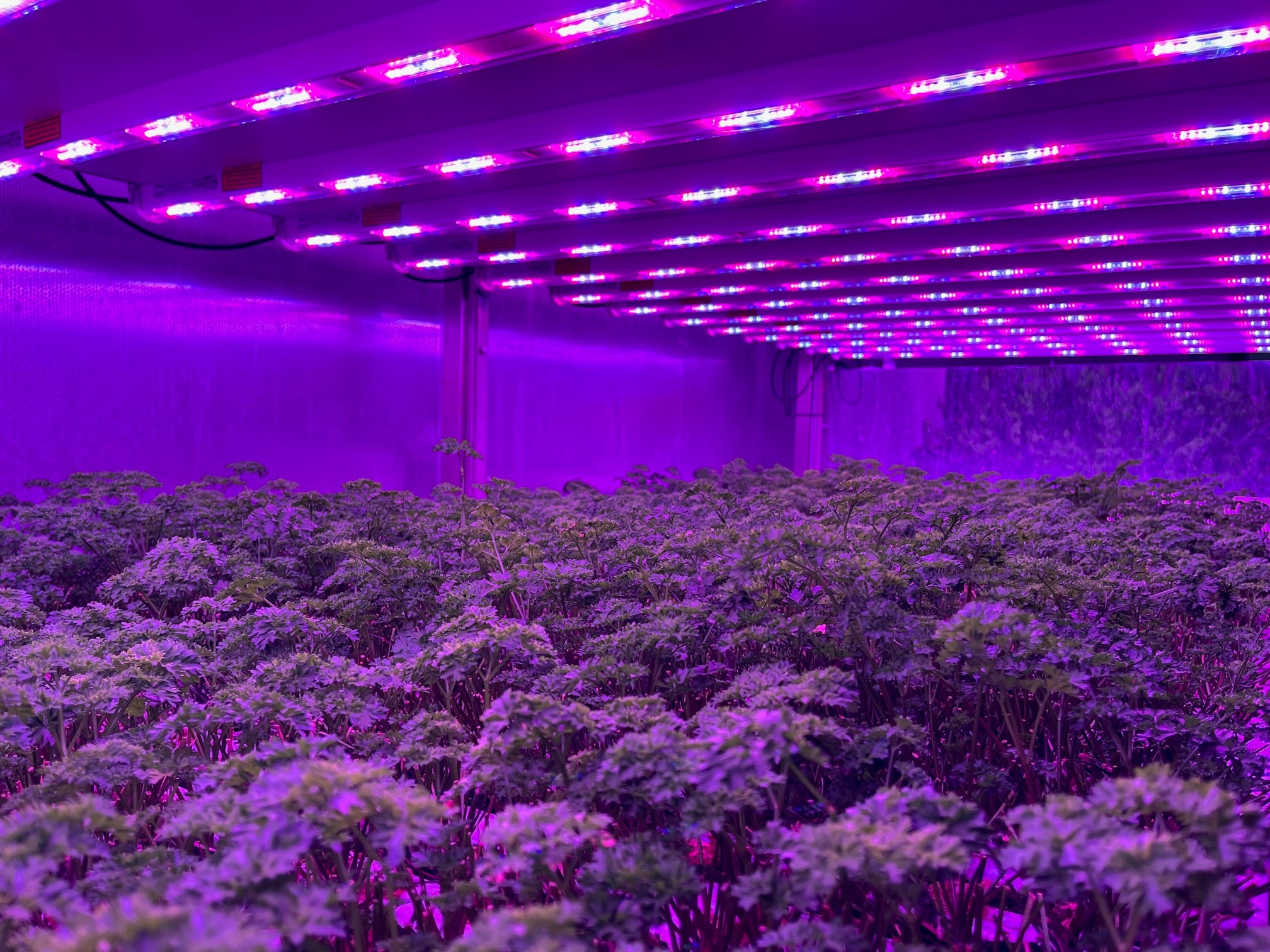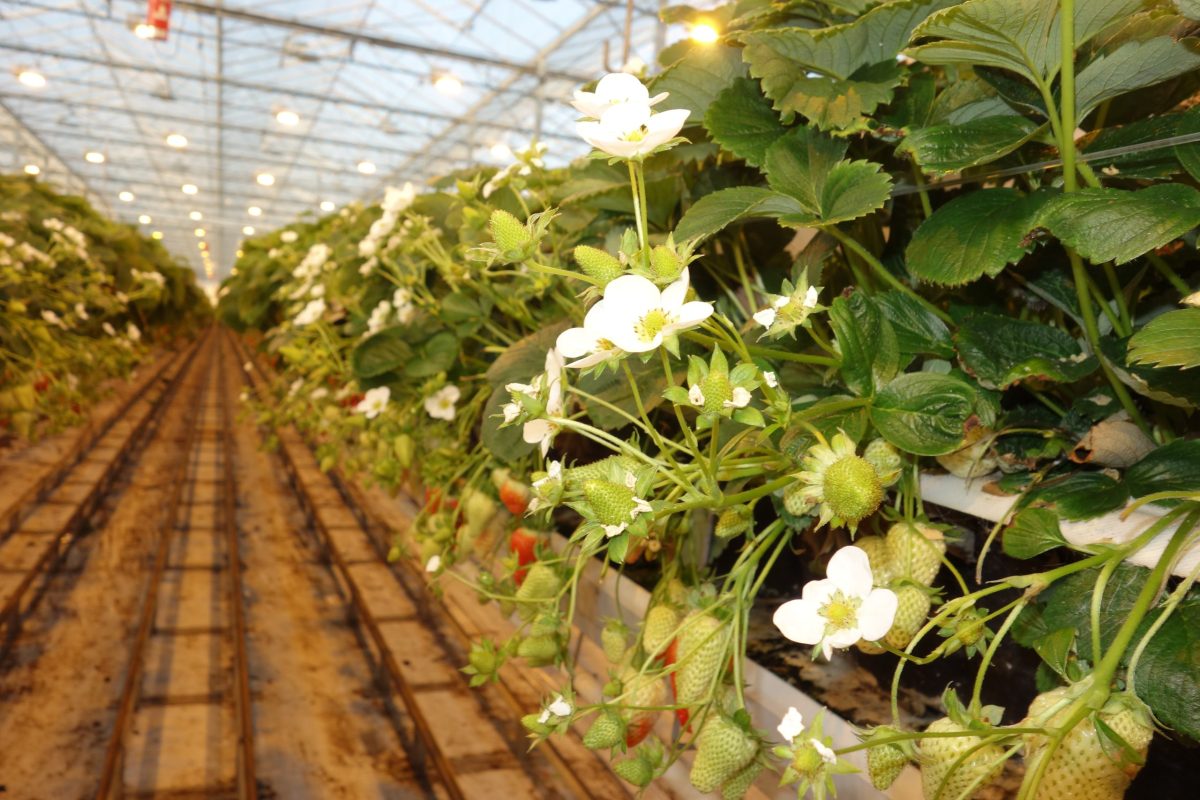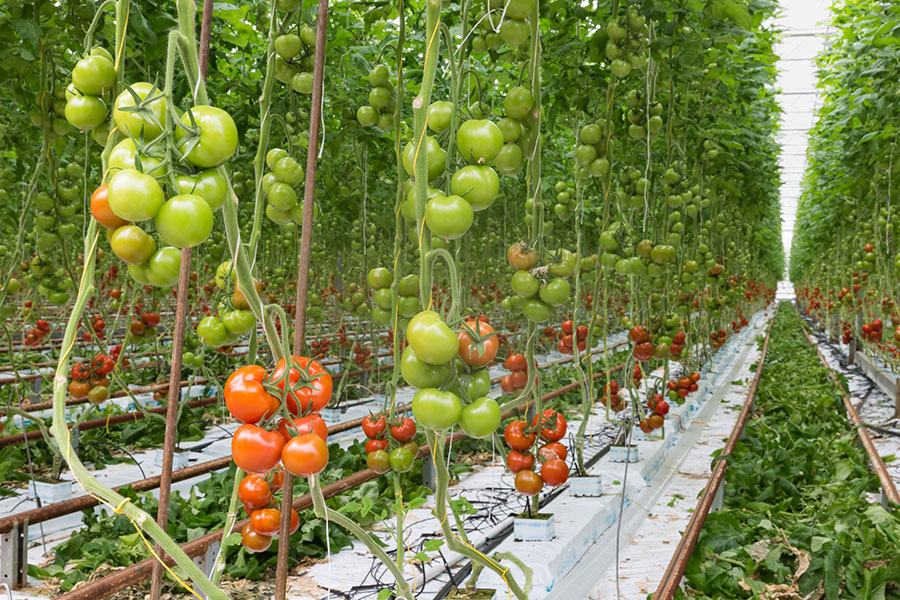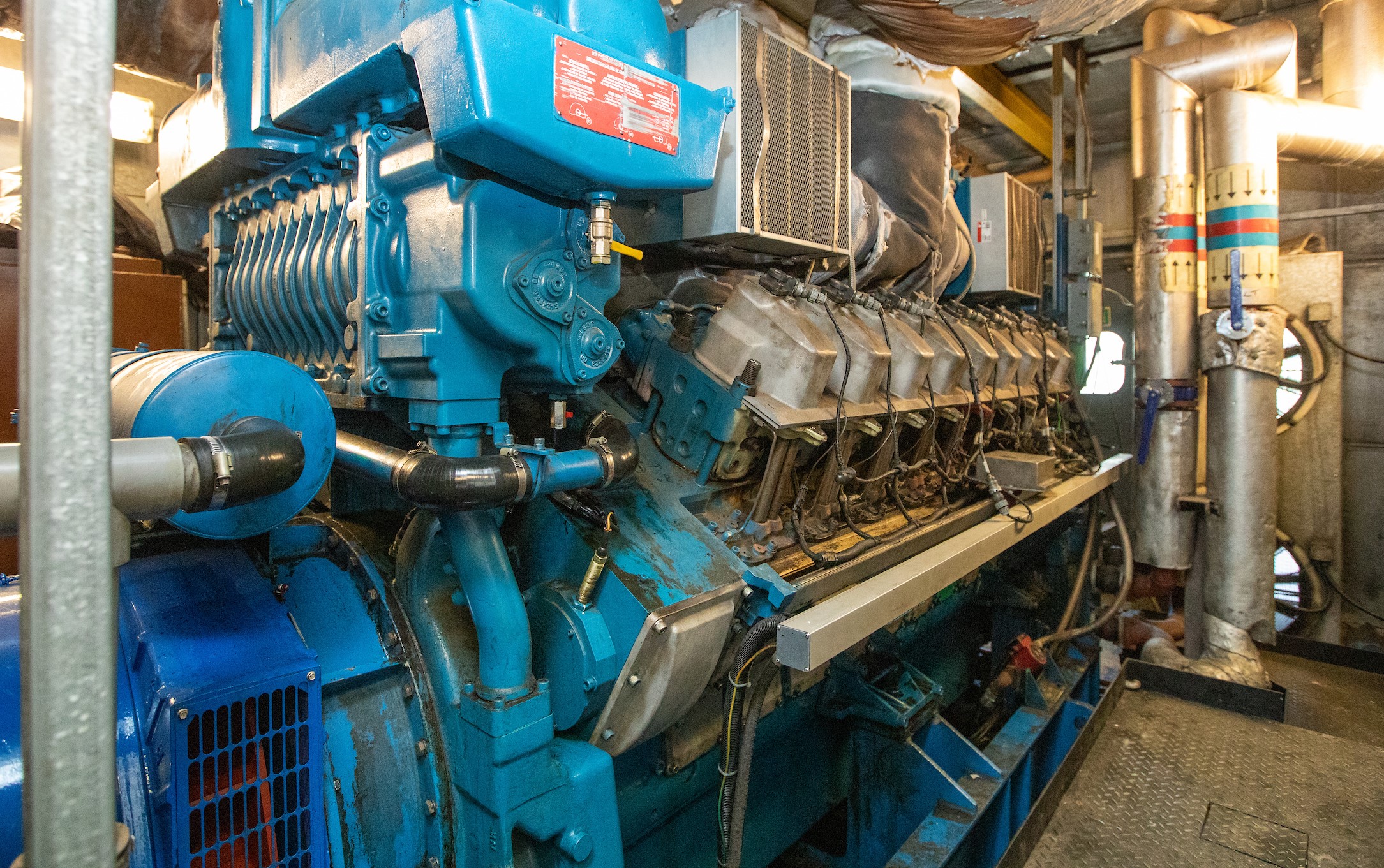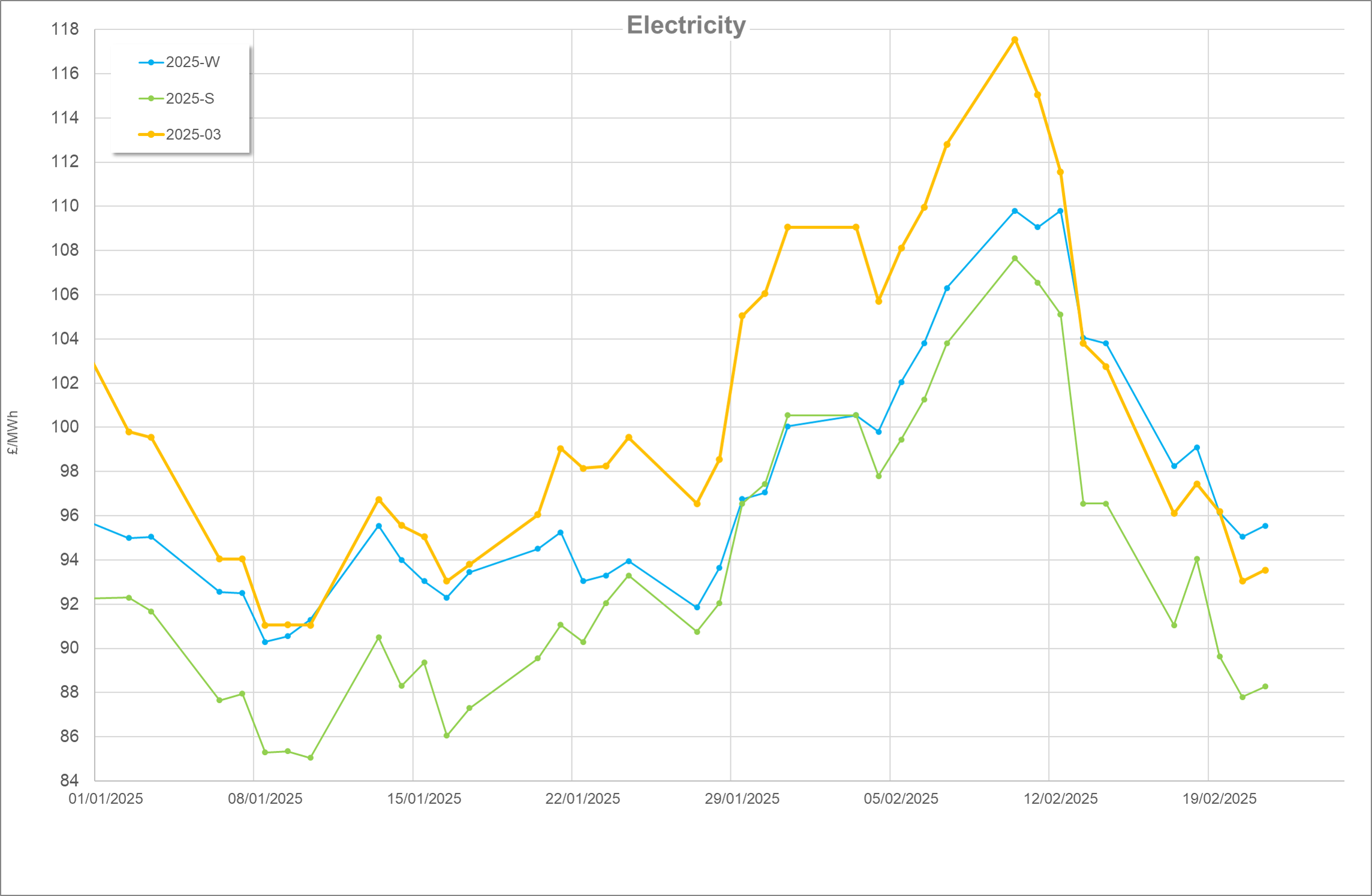First published August 2014
Find out about the potential benefits of using diffuse glass in the greenhouse, drawing on some of the latest research from Holland.
Quick links:
- Diffuse light can improve production
- What is diffuse light?
- What does diffuse glass do?
- What are the positive effects of diffuse light on a crop?
- What are the economics of diffuse glass?
- What is the effect on energy use?
Diffuse light can improve production
The advantages of diffuse light in horticultural production have been long debated, and there’s now increasing evidence that using light diffusing technologies in a greenhouse can give production advantages that include yield increases in edible crops and reduced time to market and quality improvements in ornamentals.
We draw on the research carried out by Wageningen UR Greenhouse Horticulture (WUR) in Holland to look at how diffuse light works and the potential benefits of using it in greenhouses.
What is diffuse light?
A look at how diffuse glass works and impacts light within a greenhouse.
We are all familiar with the difference between direct light and diffuse light through our everyday experience with daylight. Direct light conditions occur when the sky is clear, whereas diffuse light occurs when the sky is cloudy and overcast.
The characteristics of diffuse light are the uniform, almost shadow free light we get under an overcast sky. This is in contrast to the harsher light and shade conditions that occur in bright sunlight.
Diffuse light is quite simply a scattering of direct light using a diffusing material. The different light diffusing technologies that can be used in a greenhouse are:
- Permanent coatings and surface treatments on glass and other glazing materials.
- Temporary spray-applied glazing coatings for seasonal use.
- Retractable screens.
Most of the independent facts about diffusing technologies relate to diffuse glass, so the information below currently concentrates on this approach. However, many of the principles also apply to other methods of producing diffuse light.
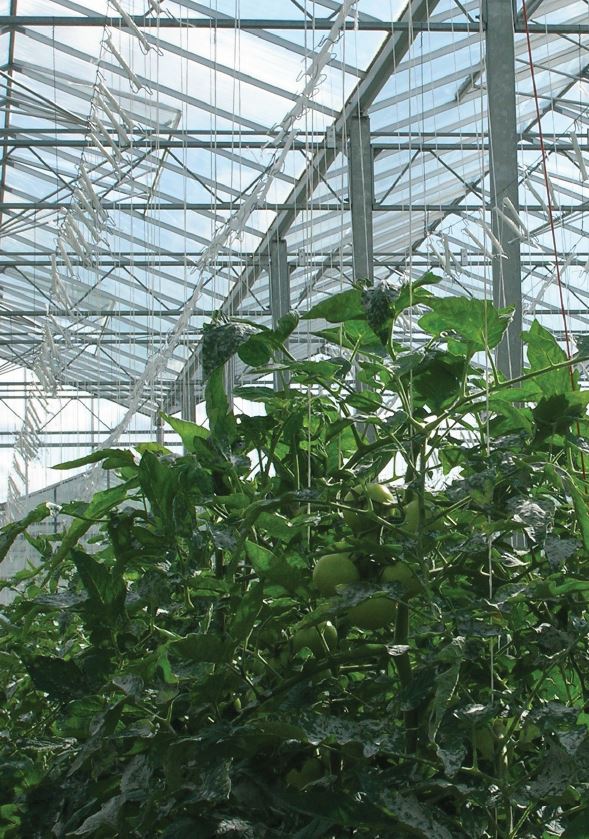
What does diffuse glass do?
A look at how diffuse glass works and impacts light within a greenhouse.
The aim of using diffuse glass in a greenhouse is to produce more scattered light which can then penetrate deeper into the crop canopy. This will then allow the plant to use more of the available light for production.
Wageningen UR Greenhouse Horticulture (WUR) in Holland has carried out a considerable amount of research into the use of diffuse glass and they are the leading source of independent information on the topic.
The results of the work carried out at WUR so far can be summarised as follows:
- There is no shadow; and light is distributed more evenly among the plants in a greenhouse with diffuse glass. This gives a more even greenhouse climate and higher production. They conclude that this is true in all crops.
- Light also penetrates deeper into all crops.
- The plant temperature at the top of the crop in strong sunlight is lower than under traditional glass.
- On average fruit was bigger on salad crops grown under diffuse glass (classic round tomato 8.5g, cucumber 10-15g).
- The quantity of harvested fruit increased, particularly in cucumber.
- Overall, increases in production of between 5% and 11% were recorded in tomato and cucumber.
- Pot plants were heavier.
- The time to market was 25% shorter for Chrysanthemum and 40% shorter for Anthurium.
What are the positive effects of diffuse light on a crop?
Positive effects include an increase in photosynthetic capacity, less crop stress and positive changes in crop morphology and development.
WUR’s researchers suggest that crops grown under diffuse glass are able to convert more light into growth (photosynthesis). This is due to a more uniform greenhouse climate and better horizontal and vertical light distribution which increases the light absorption of the lower leaf layers. This increases the photosynthetic capacity of the plant.
They have also found that the crop undergoes less stress through a lower tissue temperature in the upper crop layers and a higher tissue temperature in the lower layers. The WUR results are that the leaf temperature of a crop under diffuse glass is between -2°C and +2°C of the surrounding air temperature, compared to the leaf temperature under clear glass where the temperature is between -2°C and +6°C. The morphology and development of the crops also change. The crop is more generative and the fruits develop faster. The fruits are heavier and there are often more of them. Trials with pot plants have shown faster development and shorter growing times.
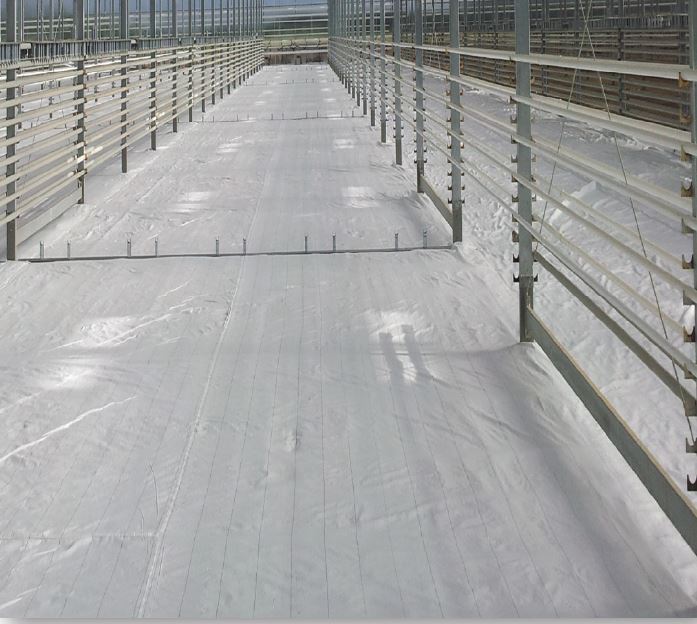
What are the economics of diffuse glass?
Economic payback may take a long time to realise but results are as yet unclear.
It is not yet clear whether the benefits will turn out to be economic. At today’s prices, permanently diffused glass typically costs £7m2 more than conventional glass in the UK – and this has to be paid for by better crop performance. The results of the WUR trials with edible crops indicate that most of the increased production is in summer – so the additional production will not attract premium prices. This means that paybacks could be long.
The first UK projects with diffuse glass are now in their first season of production, so it may not be long before those projects produce a better indication of whether the additional investment has been worthwhile.
What is the effect on energy use?
So far there are no consistent trends when we look at the impact of diffuse glass on energy use and efficiency.
This is a complex area and there are no consistent trends because it depends on how the glass diffuses light. In some cases, the heating energy consumption increases with diffuse glass. This is because the overall light transmission compared to traditional glass is reduced – and the knock on effect is that the solar heating contribution falls. However, even where this is the case, the overall energy efficiency (measured as energy use / production) is the same as in a conventionally glazed greenhouse.
An example of this is a trial carried out by WUR with an early crop of cucumbers. As a general conclusion, WUR advise that energy efficiency may improve with diffuse glass and that it is never worse than traditional glazing.
Useful Links
Wageningen University & Research (WUR) – the research facility whose work we have featured in this update

